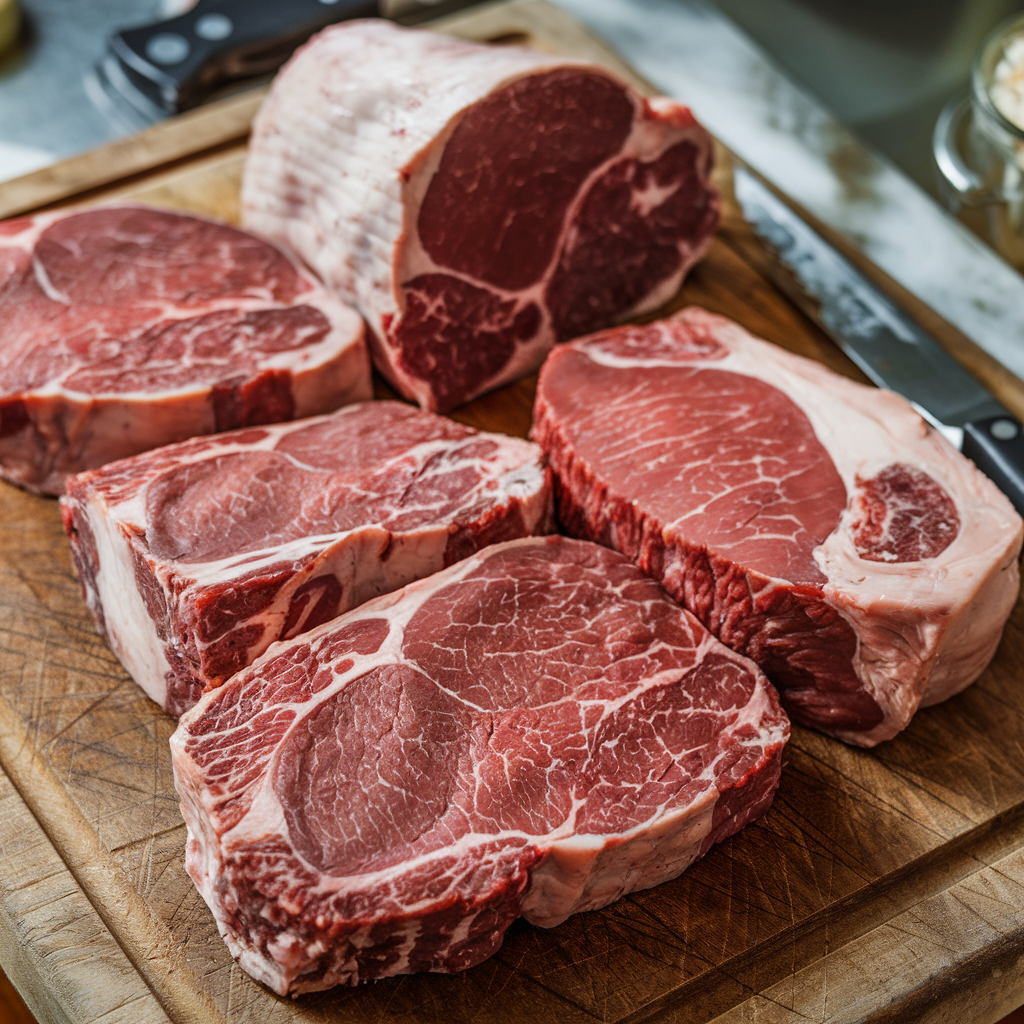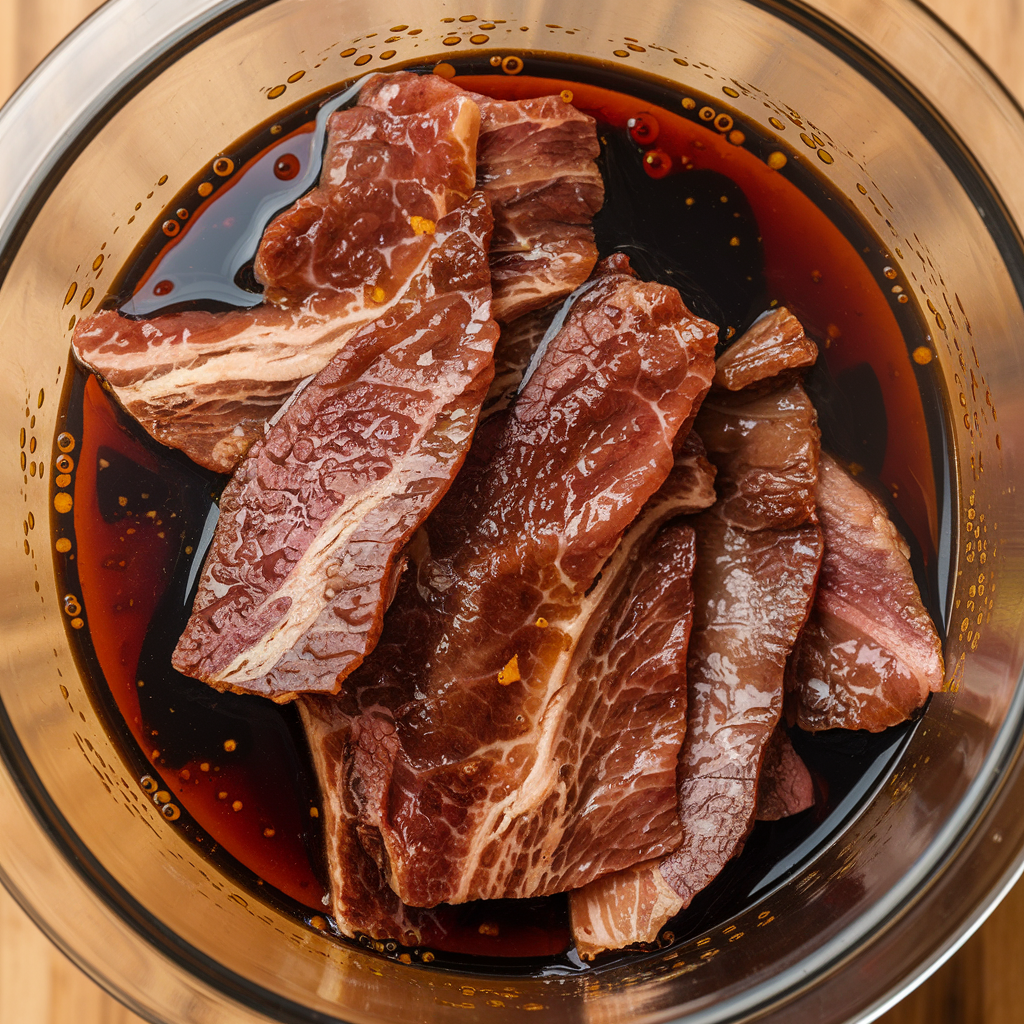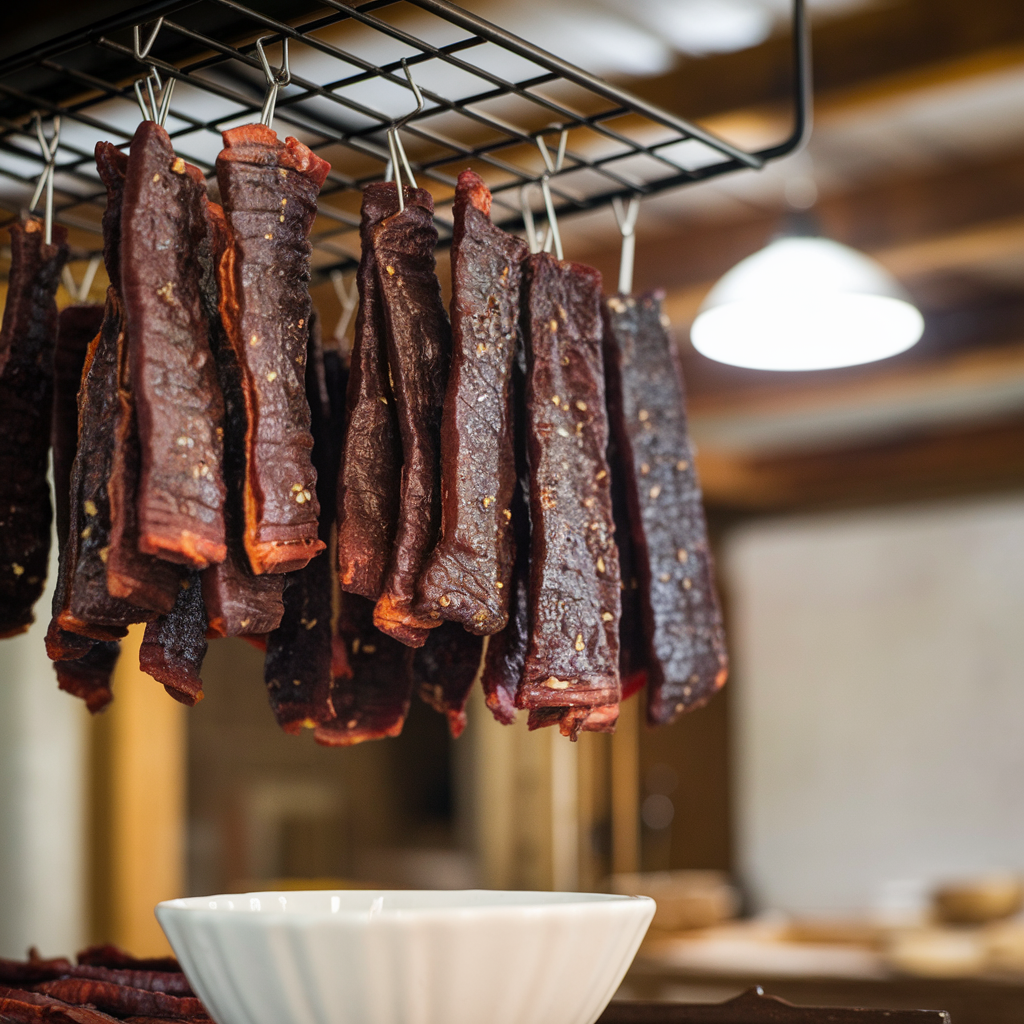Table of contents
Introduction
Smoking beef jerky is a rewarding process that results in a delicious and protein-packed snack. Understanding the time it takes to smoke beef jerky is crucial for achieving the perfect texture and flavor. Whether you’re a beginner or an experienced smoker, this guide will walk you through the essential steps and factors affecting the smoking duration.
Preparation
Choosing the Right Cut of Beef

The first step in making smoked beef jerky is selecting the right cut of beef. Lean cuts are ideal for jerky as they contain less fat, which can cause spoilage. Recommended cuts include top round, bottom round, sirloin tip, and eye of round. These cuts are not only lean but also tender when properly prepared.
Slicing the Beef
Once you have chosen your beef cut, the next step is slicing it into uniform strips. Aim for strips that are about 1/4 inch thick. Consistent thickness ensures even smoking and drying, preventing some pieces from becoming overcooked while others remain underdone. Partially freezing the beef for about an hour before slicing can make this task easier and help achieve uniform slices.
Marinating the Beef

Marinating is a crucial step that adds flavor and tenderness to your jerky. Prepare a marinade using ingredients such as soy sauce, Worcestershire sauce, brown sugar, and liquid smoke. Allow the beef strips to marinate in the refrigerator for at least 4 hours, or overnight for best results. Turning the beef occasionally ensures that the marinade is evenly absorbed.
Smoking Techniques
Equipment Needed
To smoke beef jerky, you’ll need the right equipment. The most common types of smokers include electric smokers, charcoal smokers, pellet smokers, and gas smokers. Each type has its benefits, and you can choose based on your preference and availability. If you don’t have a smoker, you can also use a regular grill or an oven.
– Types of Smokers
- Electric Smokers: These are easy to use and provide consistent temperature control, making them ideal for beginners.
- Charcoal Smokers: These offer a traditional smoky flavor and are favored by purists, but require more attention to maintain the correct temperature.
- Pellet Smokers: These use wood pellets and are known for their convenience and ability to maintain a steady temperature.
- Gas Smokers: These are easy to use and heat up quickly, but might not provide as much smoky flavor as charcoal or pellet smokers.
– Alternatives to Smokers
- Grill: Set up indirect heat and use wood chips to create smoke. This method can produce good results if you don’t have a smoker.
- Oven: Set the oven to its lowest temperature and use a foil-lined baking sheet with a rack to allow air circulation. Keep the oven door slightly open to let moisture escape.
Preparing the Smoker
Before you start smoking the beef jerky, prepare your smoker by setting it to a low temperature of around 160-180°F. Soak wood chips in water for about 30 minutes before adding them to the smoker. This helps create a steady flow of smoke and prevents the chips from burning too quickly.
Smoking Process
Smoking Time and Temperature
To achieve the best results, maintain a consistent smoking temperature between 160-180°F. Smoking beef jerky typically takes around 4-6 hours. The exact time can vary based on factors like the thickness of the beef strips and the type of smoker used. It’s crucial to keep the temperature steady to ensure the jerky dries evenly and develops a rich, smoky flavor.
Monitoring the Process
During the smoking process, periodically check the beef strips to ensure they are drying evenly. You’ll know the jerky is done when it bends and cracks but doesn’t break in half. If the jerky feels too soft or moist, it needs more time in the smoker. Adjust the smoking time based on your preference for texture and chewiness.
Cooling and Storing Jerky

After smoking, allow the beef jerky to cool completely on wire racks. Proper cooling helps prevent moisture buildup, which can lead to spoilage. Once cooled, store the jerky in airtight containers or vacuum-sealed bags. Properly stored, homemade jerky can last up to two weeks at room temperature or longer in the refrigerator. For extended shelf life, you can also freeze the jerky.
Factors Affecting Smoking Time
Thickness of Beef Strips
The thickness of the beef strips is one of the most significant factors affecting smoking time. Thicker strips will take longer to dry and smoke thoroughly, while thinner strips will dry faster. Aim for uniform thickness in all strips to ensure even smoking and consistent texture.
Smoker Type and Efficiency
The type and efficiency of your smoker also play a crucial role in the smoking time. Electric smokers provide consistent temperature control, which can help maintain a steady smoking time. Charcoal smokers may require more attention to keep the temperature stable, possibly affecting the overall duration. Pellet and gas smokers generally offer good temperature control, resulting in a more predictable smoking time.
Weather Conditions
External weather conditions, such as temperature and humidity, can influence the smoking process. High humidity can slow down the drying process, requiring more time to achieve the desired texture. Cold weather might make it challenging to maintain the smoker’s internal temperature, while hot weather can speed up the process. Adjust your smoking time based on the current weather conditions to ensure your jerky is perfectly smoked.
Tips for Perfect Smoked Beef Jerky
Maintaining Consistent Temperature
Maintaining a consistent temperature is critical to achieving the perfect smoked beef jerky. Fluctuating temperatures can cause the jerky to cook unevenly, resulting in some pieces being over-dried while others are under-dried. Use a reliable meat thermometer to monitor the internal temperature of your smoker and make adjustments as needed to keep it within the 160-180°F range.
Avoiding Common Mistakes
To ensure your jerky turns out perfect, avoid these common mistakes:
- Over-Smoking or Under-Smoking: Too much smoke can make the jerky bitter, while too little can result in a lack of flavor. Balance is key.
- Inconsistent Slicing: Unevenly sliced beef strips can lead to inconsistent drying times. Aim for uniform thickness to ensure all pieces dry evenly.
- Skipping the Marinating Step: Marinating not only adds flavor but also helps tenderize the meat. Skipping this step can result in tough, flavorless jerky.
Storage and Shelf Life
Proper storage is essential to maintain the quality and safety of your beef jerky. Once the jerky has cooled completely, store it in an airtight container or vacuum-sealed bags. Properly stored jerky can last up to two weeks at room temperature. For longer storage, keep the jerky in the refrigerator or freeze it to extend its shelf life.
Health Benefits and Nutritional Information
Nutritional Profile of Smoked Beef Jerky
Smoked beef jerky is not just a tasty snack; it’s also packed with nutritional benefits. It’s a high-protein snack that can be a great addition to your diet, especially if you’re looking for a convenient and portable source of protein.
Protein Content
Beef jerky is an excellent source of protein, which is essential for building and repairing muscles, as well as supporting various bodily functions. A typical serving of beef jerky provides about 10-15 grams of protein, making it a powerful snack for post-workout recovery or a mid-day energy boost.
Vitamins and Minerals
In addition to protein, smoked beef jerky contains essential vitamins and minerals such as iron, zinc, and B vitamins. Iron is crucial for oxygen transport in the blood, zinc supports immune function and wound healing, and B vitamins play a vital role in energy metabolism and maintaining healthy nerve function.
Health Benefits and Considerations
While beef jerky offers numerous health benefits, it’s important to consume it in moderation due to its sodium content. High sodium intake can lead to increased blood pressure and other health issues. Opt for homemade recipes or choose store-bought options with lower sodium levels to enjoy beef jerky as a healthy snack.
Properly prepared and smoked beef jerky is free from artificial preservatives and additives, making it a healthier alternative to many processed snacks. It provides a quick source of energy and nutrients, making it an ideal choice for busy lifestyles, outdoor activities, and as a convenient protein snack on the go.
Conclusion
Recap of Key Points
Smoking beef jerky is a rewarding process that involves several crucial steps, from selecting the right cut of beef and marinating it to smoking it at the proper temperature. Understanding the factors that affect smoking time, such as the thickness of the beef strips, the type of smoker, and external weather conditions, is essential for achieving perfect results. Maintaining a consistent temperature and avoiding common mistakes are key to making delicious, homemade smoked beef jerky.
Encouragement to Try Smoking Beef Jerky at Home
Making your own smoked beef jerky allows you to control the ingredients and flavors, ensuring a healthier and more personalized snack. It’s a fun and rewarding process that results in a tasty treat perfect for any occasion. Whether you’re preparing it for a hiking trip, a protein-packed snack, or just for fun, homemade beef jerky is a great addition to your culinary repertoire.
FAQs
How Long Should You Smoke Beef Jerky?
The typical smoking duration for beef jerky is around 4-6 hours. This timeframe allows the beef to dry out and absorb the smoky flavor fully. However, the exact time can vary depending on the thickness of the beef strips and the type of smoker you are using.
What Temperature Should You Smoke Beef Jerky At?
The recommended temperature for smoking beef jerky is between 160-180°F. Maintaining this temperature range ensures that the jerky dries evenly without cooking too quickly. Using a reliable meat thermometer can help monitor and maintain the right temperature throughout the smoking process.
Can You Smoke Beef Jerky Too Long?
Yes, it is possible to smoke beef jerky for too long. Over-smoking can result in jerky that is too dry and brittle, making it less enjoyable to eat. To avoid this, check the jerky periodically during the smoking process. The jerky is done when it bends and cracks but does not break in half.
How Do You Know When Beef Jerky Is Done?
You can tell that beef jerky is done when it has a leathery texture and a slight bend without breaking. It should be dry to the touch but still pliable. If the jerky feels soft or has moisture when you bend it, it needs more time in the smoker. Once the jerky cools, it should have a firm, chewy consistency.


1 thought on “How Long Does It Take to Smoke Beef Jerky?”